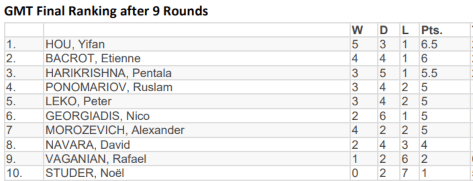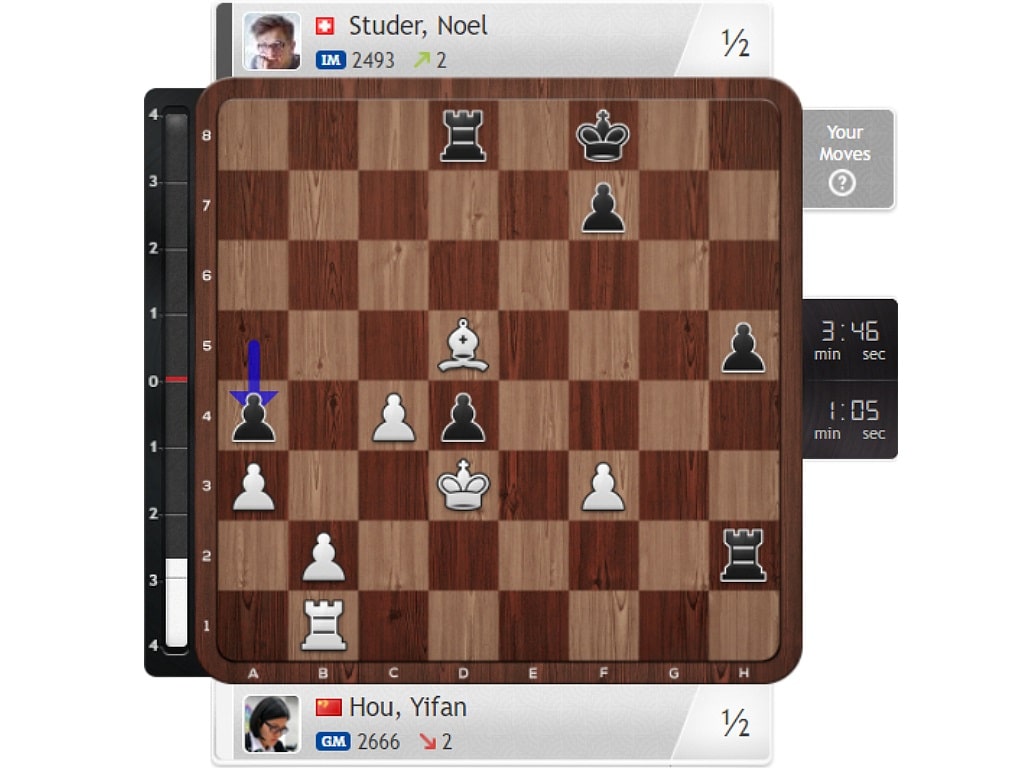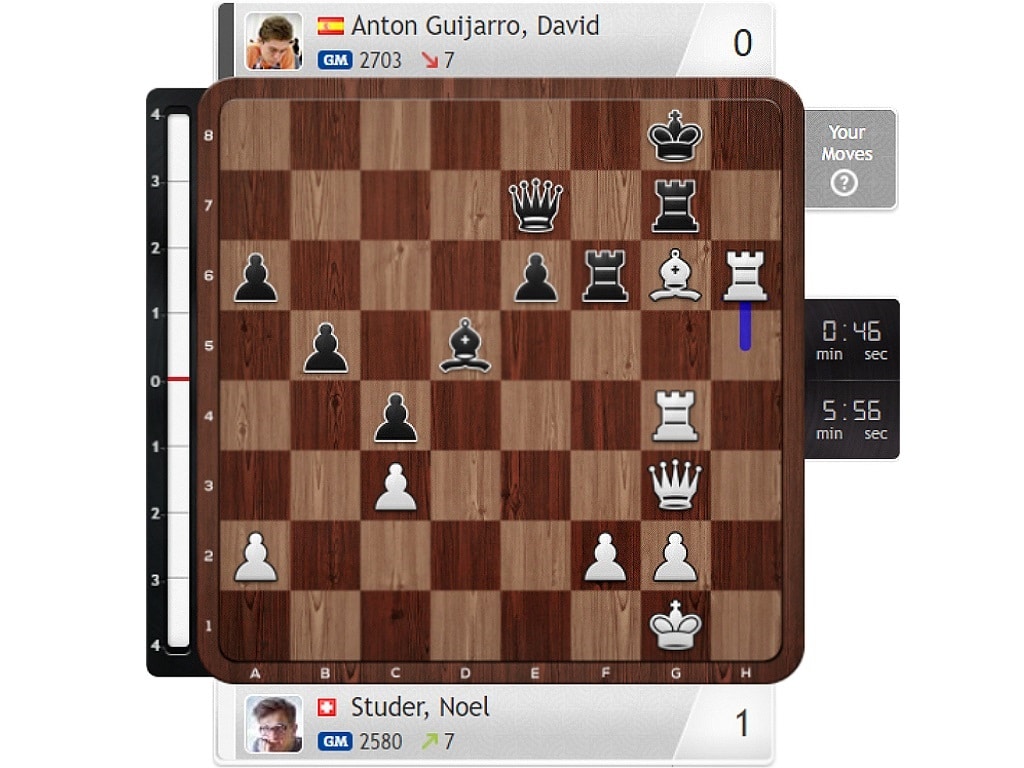Whenever I face a higher-rated opponent, I am going into the game ready to beat him. No passivity or trying to hold a draw. I want to play my own game, take command and win from a position of strength.
Rather than being scared of my opponent, I trust my intuition. Rather than playing passively and hoping for the lucky punch, I play actively and try to force mistakes.
If you need advice on how to play against lower-rated opponents, then this post is for you.
Long-Term Approach
I’m not going to lie to you. This approach can cost you some points short term. But you will massively benefit from it later on.
To improve, you must face difficult challenges. Losses are part of your process. There is no way you can avoid them altogether.
Let’s say you are 1500-rated and play a 1600-rated opponent. If you always just play passively and try to draw, you will never learn how to beat 1600-rated players from a position of strength.
The moment your rating will be 1600+ you will not know how on earth to beat 1600, because you have never done it before. This means you might get stuck on this level, just because you focused on some fast and easy rating gains earlier on.
If you choose to try to play for a win, you will maybe lose 1 or 2 games more. But whenever it is time to, you are ready to beat the 1600-rated opponents one after another. Because you tried and you did that before.
My Own Experiences
Painful Losses
One of my most painful tournaments was without a doubt the GM Tournament in Biel 2017. It was my strongest tournament up to this date. 7 out of 9 opponents had a rating over 2650. With a mere 2493, I was one of the two biggest outsiders in this tournament.

Instead of trying to hold a draw, or play as safely as possible, I decided to go for complications in every game. Why?
Because every game against a stronger opponent is a free possibility to learn something. You can compare yourself to somebody you look up to and feel what you lack to get to that level yourself. It is like a free private masterclass. Don’t miss out on this!
As you see, the result was a total disaster. Towards the end of the tournament, it was hard to stay true to my approach. Even though I was very frustrated with the outcome, I fought till the end. No short draws, no playing passive or safe.
I had two totally winning positions and many more much better ones. I failed to convert but showed myself that I am ready to suffer short-term losses to improve faster and get stronger in the long term.

At the moment it was especially hard because my countryman GM Georgiadis played fantastically well and scored 5/9. He chose another approach and went for the maximum of points. This did pay off and all the talk was about him.
Consequently, the disastrous result cost me the invitation to the GM Tournament 2018, where Nico had the chance to face off against Carlsen, Mamedyarov, and Co.
I felt like an idiot.
But something inside me knew the risk would pay off at some point.
Rewards
And indeed it still does! I feel more than ever that I can basically beat anybody with any color on a good day. I proved this many times. The biggest success was in 2019, when I beat GM Harikrishna, then rated 2749 and in the Top 20 of the world, with the black pieces.
After an early mistake of his, I avoided move repetition on move 22 and never looked back. Note that I played the French Winawer Variation, one of the most complex in chess theory. Far away from playing it safe.
When I got back to the GM Tournament in Biel 2020 I had the same approach. Play for a win in every game. This time my classical result of 2/7 still was disappointing, but there were big improvements.
Additionally, to beating GM Anton Guijarro in convincing style, I had 3 winning positions with black. I scored only 0.5/3 out of them, but I felt I was extremely close to scoring a heavy plus score against superb opposition.

I did actually score heavily in later tournaments:
- Cattolica Open 2020 8/9 (after 7/7!)
- Accentus Young Masters 2020 7/10 (against GMs only)
- Swiss Championship 2019 7.5/9
These results are in no way possible if you go the easy way.
After those results I got many messages, also from strong GMs, asking me how it is possible to win so many games against strong opposition.
The answer is simple: I have been training for it for many years. Now is the time to get the rewards.
It Is Your Turn
I doubt it can be much worse than being humiliated with 1/9 on home soil. And yet I survived. So, try it out. Be ready to invest short term in order to win big in the long term.
Next time you face a higher-rated opponent:
- Follow your intuition.
- Don’t fall into passivity.
- Go for the attack.
- Take the initiative.
- Don’t repeat moves if you feel you are better.
- NEVER offer draw if your position is superior.
If you follow this advice, maybe one day you can use it against the author of those lines. Full circle. I’m waiting for you. Ready for a fight.